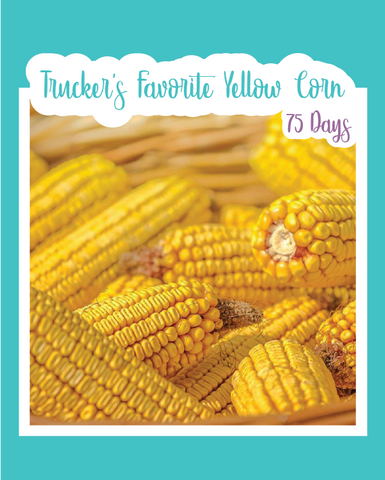
Glass Gem Corn
**THIS ITEM IS SOLD OUT FOR THE SEASON**
Seed Count: Approx. 25 seeds
Days to Maturity: 105-110 days
Description: Glass gem corn is an absolute show stopper in the garden with its amazing colors. It boasts a wide range of translucent, jewel toned kernels. The wide array of colors makes each of the ears so beautiful and unique that you won't want to eat them! They look photoshopped, but I swear they aren't! Each ear is a bout 3-8 inches long and grow on 8-10 ft. stalks! This late producer will produce 1-2 ears per stalk, and will create lots of side shoots in areas with long enough seasons. It is generally used as a flint or popcorn. It can be used for crafts, or fall decor, and can be ground up for cornmeal or flour or used to make yummy popcorn! While this variety is edible, it is important to know that it is not sweet off the cob, and would not be best to eat it as a sweet corn. Glass Gem corn was bred from different Native corn varieties by Carl "White Eagle" Barnes, the famous Cherokee corn collector. If you have the space to grow corn, then I definitely recommend that you give this unique variety a try.
How To Grow
Sowing: One week, after frost, or when the soil consistently reaches 60 degrees F, plant the corn 1 inch deep in rows 30 inches apart with 6-12 inches between each row. You can also grow them in clusters of 3-4 seeds per hole, with a gap of 3-4 ft. Plant your corn in an area with full sun that is protected from wind. Plant blocks of four short rows to ensure good pollination. Long skinny rows will result in poor pollination. Germination can take 7-12 days. You can companion plant with peas, cucumbers, or pole beans; plants that like shade also do well with corn. However, avoid planting tomatoes near corn, since they share similar pests, and compete for vertical space and nutrients.
Growing: Corn requires large quantities of both water and fertilizer to produce full healthy ears. Give corn 1 1/2 inches of water per week, and make sure to remove weeds so they do not compete for water and nutrients. However, corn that is waterlogged will not do well, so make sure the soil drains properly. To increase chances of proper pollination, hand pollinate by shaking the plants several times a day, to make sure the pollen reaches corn silks. To reduce problems with army worms, and corn ear worms, the organic compound Spinosad can be used on corn tassels and new growth once a week. This corn gets to about 8-10 feet tall.
Harvesting: Harvest corn ears when the husks are dry and brown. This corn is meant to be used as a popping corn, or for grinding into flour and cornmeal. Try making tortillas with it! To save seeds, leave corn on its stalks to completely dry in the field. They are ready to harvest for seeds, when the stalk and the ears turn completely brown with no green coloring. However, since continued rainy weather and humidity compromises the quality of the ears, drying them inside may be the best route. Choose a dry location with moderate heat, but out of direct sunlight; hang the stalks upside down, or lay them out flat until they are dry enough seed storage.




